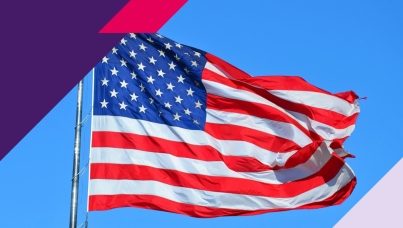

A closer look at President Trump’s approval rating
As President Donald Trump approaches the one-year mark of his second term, Americans’ views of his job performance are coming into focus.
Below are five charts that show where Trump’s approval stands and what that could mean for 2026.
1. A different standard for presidential approval. Today, presidential approval ratings have a high floor and low ceiling due to durable loyalty within the president’s party and consistent opposition from the other party. This trend first became clear in Trump’s first term, persisted through former President Joe Biden’s term, and remains true today.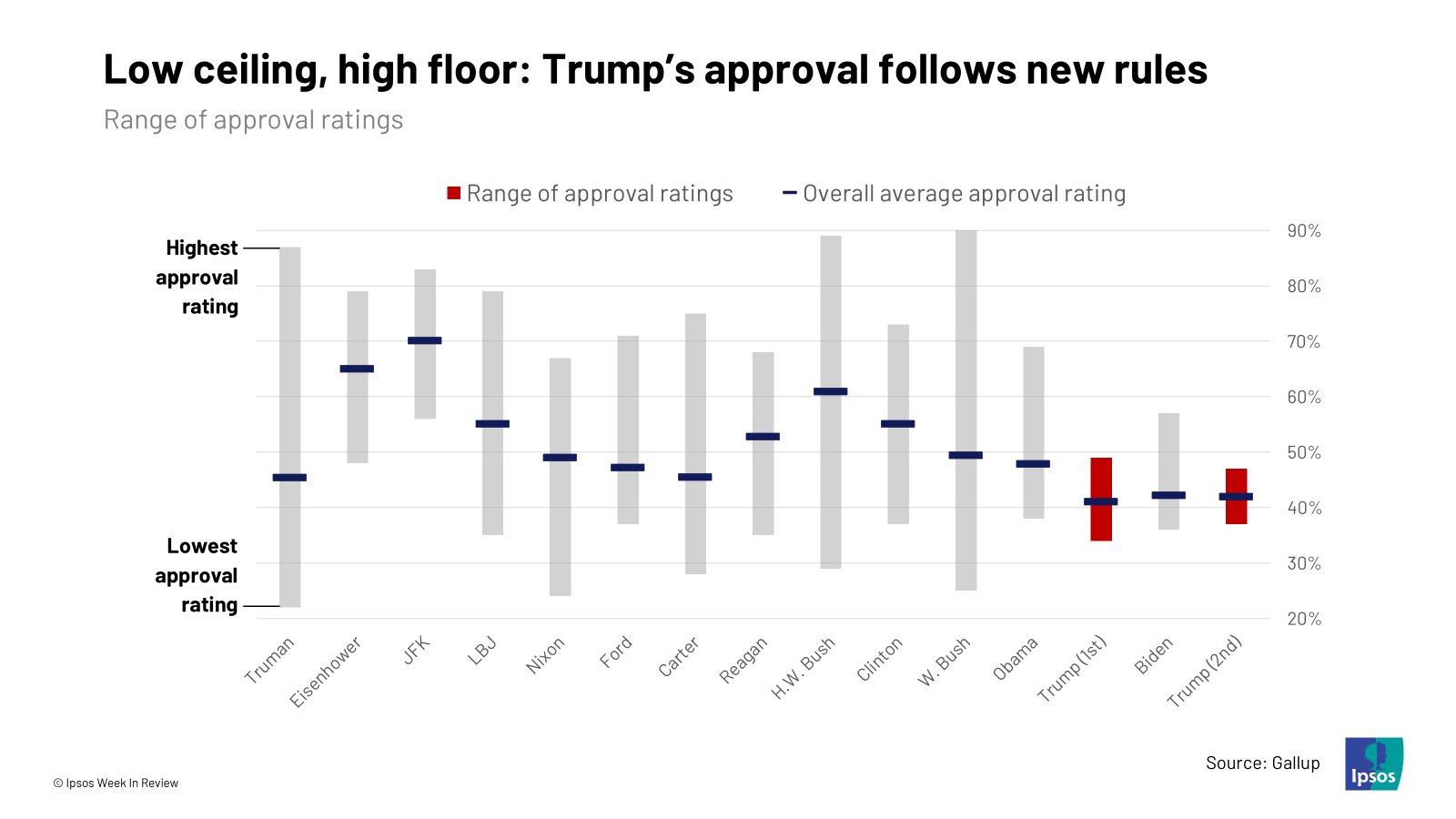
2. Trump’s approval is slightly above his first‑term levels. Trump’s approval is below where other recent presidents started. However, his approval exceeds both his first term levels and Biden’s at the end of his presidency.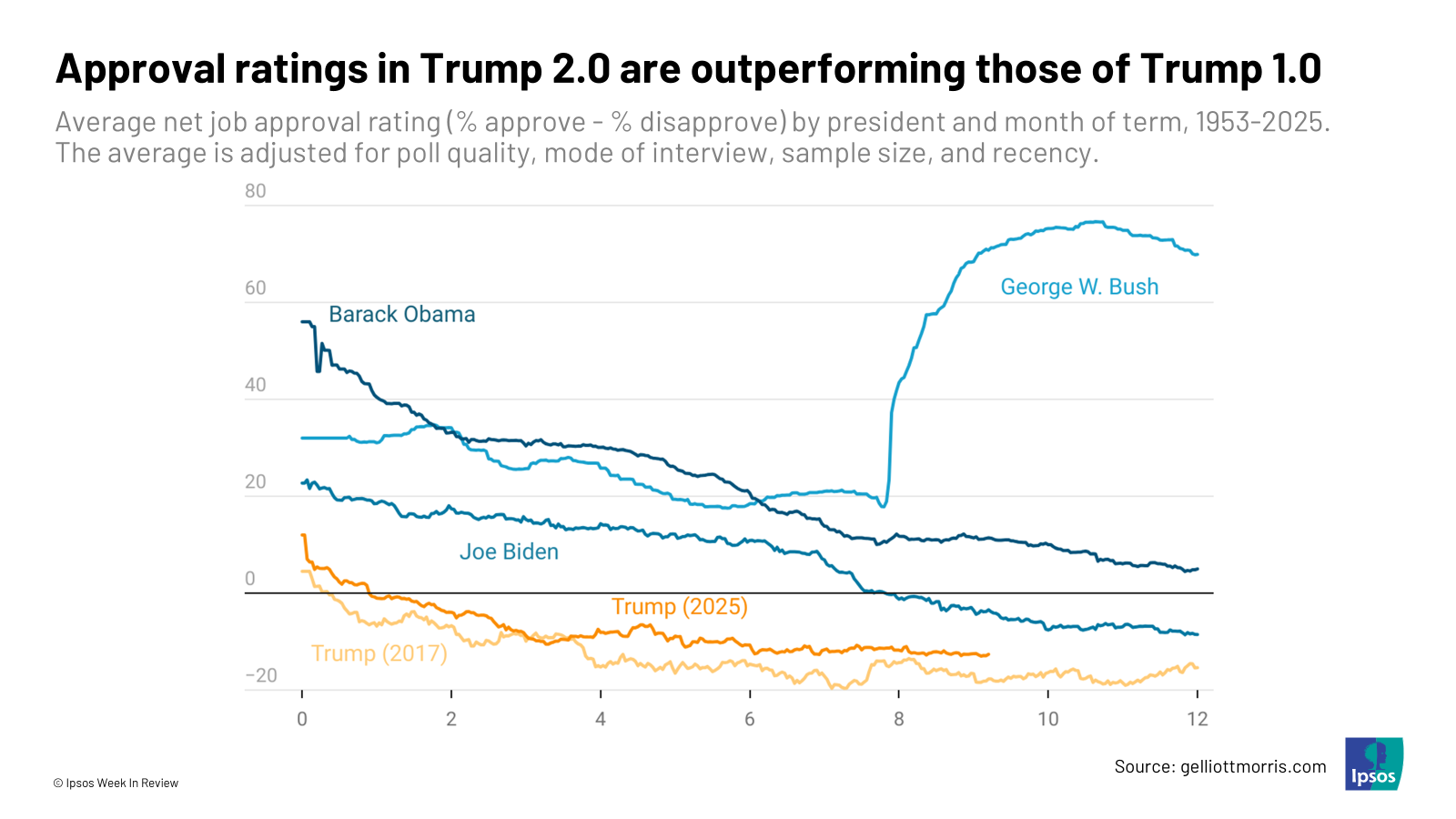
3. News events don’t tend to shift approval ratings. Even highly visible news events, such as the U.S. airstrikes on Iran, rarely move the needle in a significant way. One notable exception is tariffs, which coincided with a drop in Trump’s approval ratings.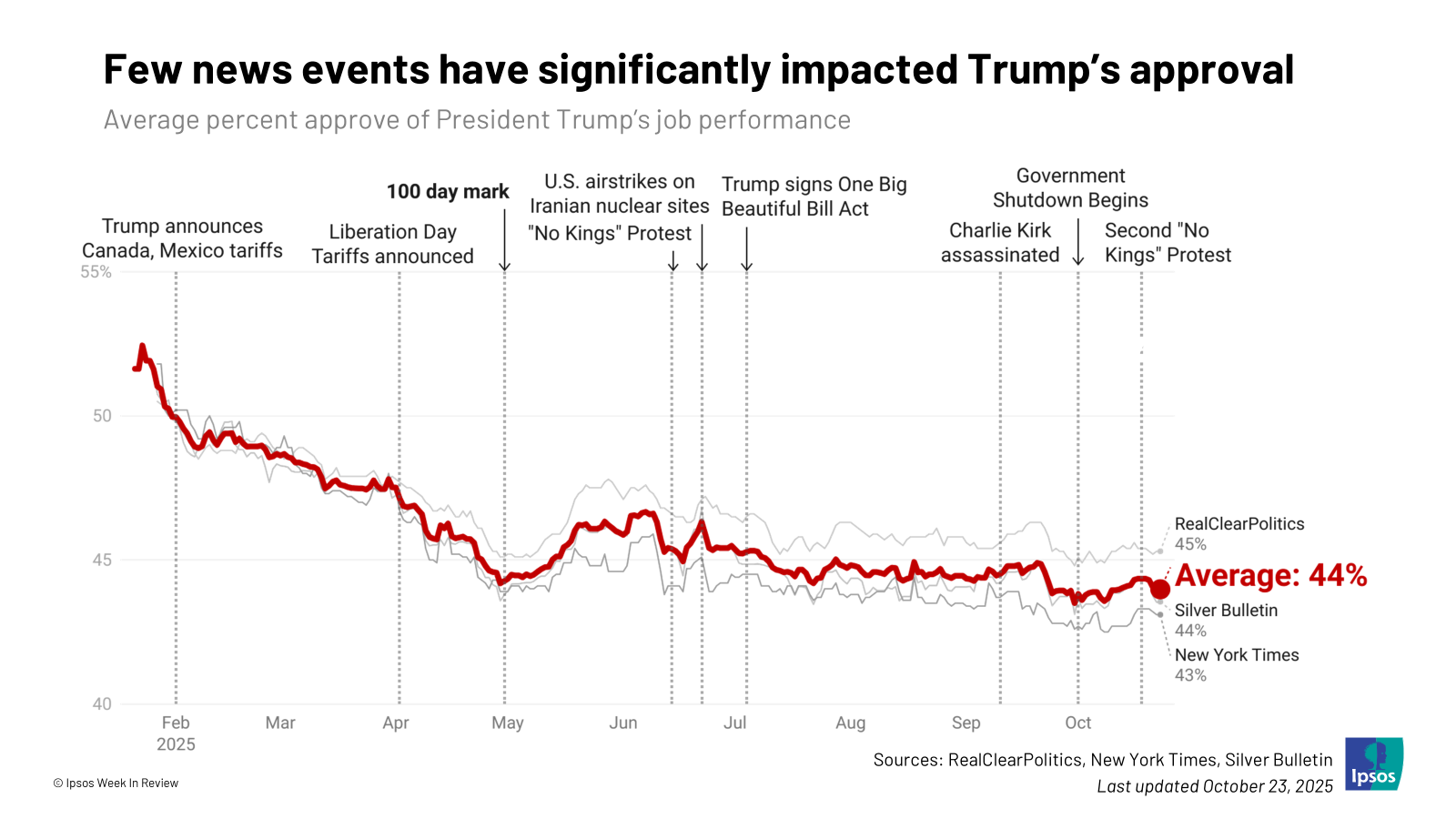
4. Strengths and weaknesses. Trump outperforms his overall net approval rating on crime and immigration. However, his net approval trails on issues that were top of mind for voters in the 2024 election: inflation, the cost of living, and the economy.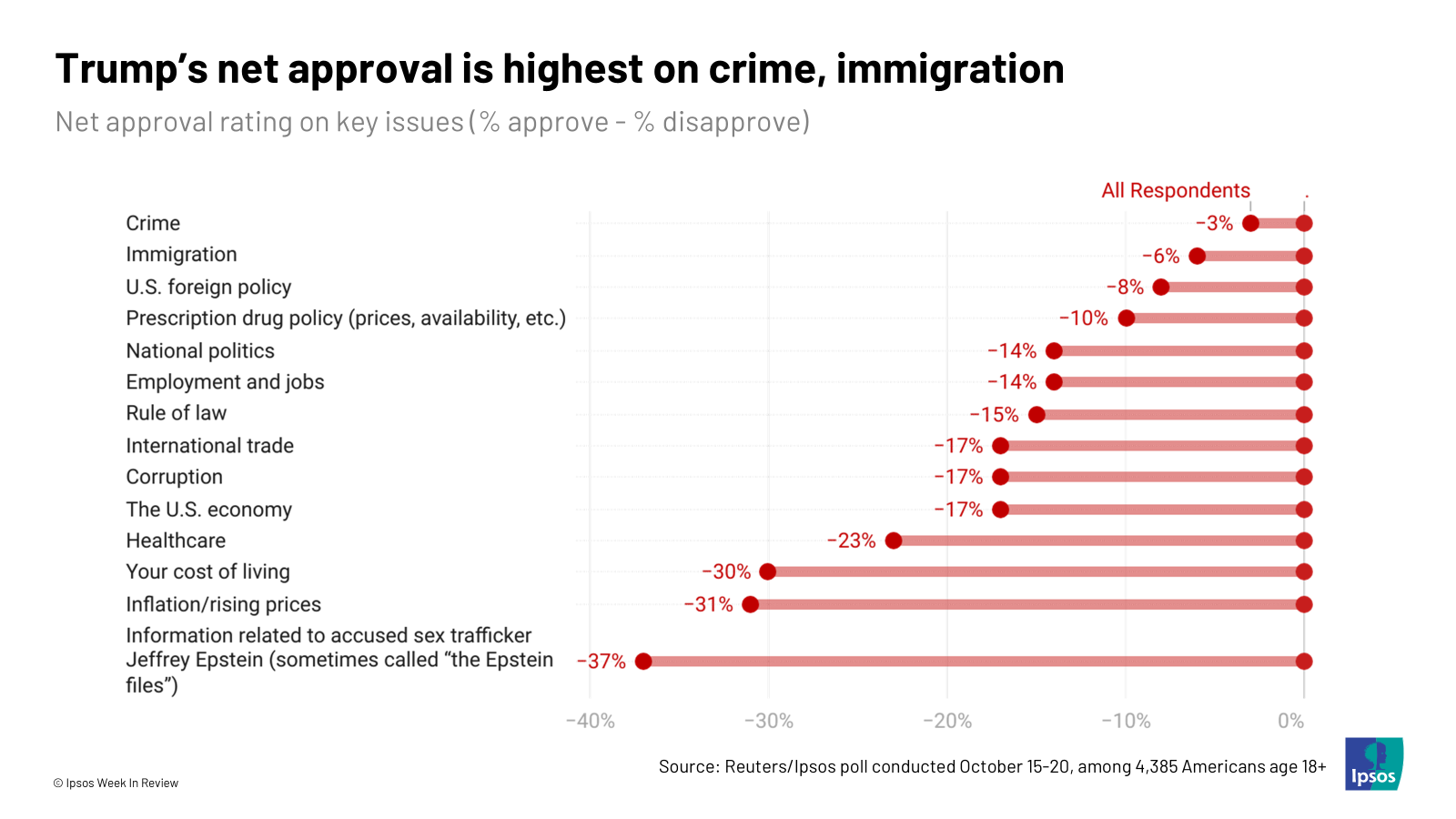
5. The issue landscape favors Republicans. Trump has a negative net approval rating both overall and on key issues. Even so, Americans favor the Republican Party over the Democratic Party on most major issues. The issue landscape was an advantage for Republicans in 2024. It has remained so through 2025.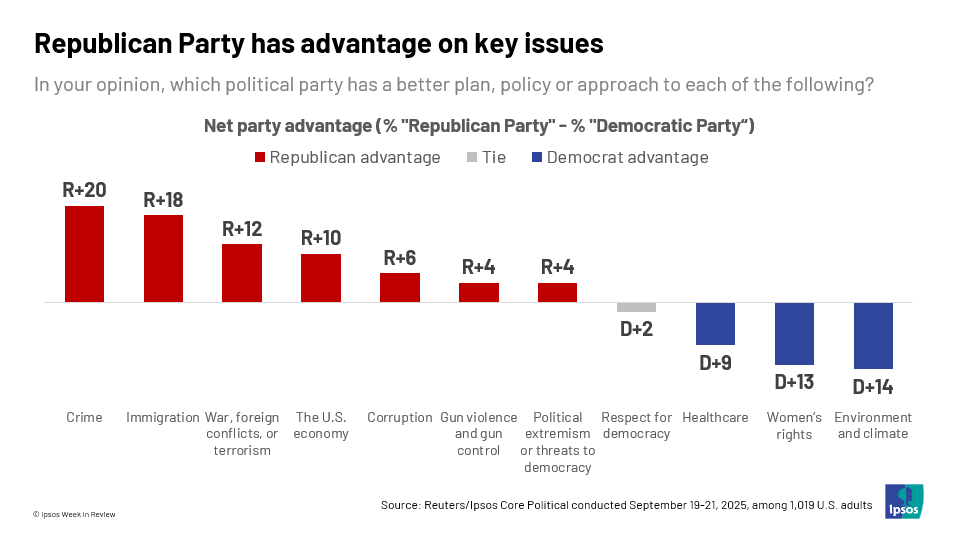
Overall, Trump’s approval is stable and has modestly improved from his first term.
There will still be hurdles to overcome for Trump and the Republican Party in upcoming elections. While having support from 40% of the voting population is technically more than enough to win a general election, rallying the base for a historically lower-turnout election like the midterms is a different challenge. In the longer term, this could have additional ramifications. Ipsos models suggest that incumbent presidents with a 40% approval rating have a roughly 50-50 chance at winning reelection. For a successor, those odds drop to around one in eight.


